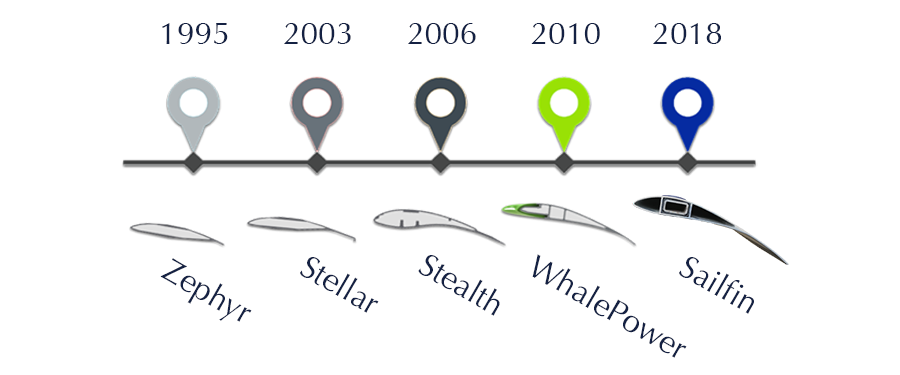
How Innovative Airfoils Improve Ceiling Fan Performance
In the world of ceiling fans, manufacturers often make bold claims, “our fan is the best because it has better airflow or coverage.” But what actually makes one fan better than another? The answer lies in the science behind the blades—specifically, the airfoil design.
What Is an Airfoil and Why Does It Matter in Ceiling Fans?
Every ceiling fan consists of key components: the motor, the controller, the hub, and the blades. The blades are especially critical—they determine how effectively the fan moves air. This performance is largely influenced by the blade’s airfoil design.
- Angle of Attack – The angle of the blade from the trailing edge to the leading edge, which impacts how much air is deflected
- Blade Width – A wider blade has the potential to more air, improving the volume of air and coverage area
- Trailing Edge Design – The shape of the blade’s back edge, which influences air control and distribution
Why Airfoil Design Impacts Fan Performance
Those factors mentioned above are each essential to creating the optimal fan as they contribute to performance, integrity, and lifespan.
- Angle of Attack – Increases air velocity, pushing air downward with greater force
- Blade Width – This is used to increase overall strength and volume of air moved
- Trailing Edge Design – Helps control and evenly distribute airflow across the blade surface
All of these elements also play a role in minimizing a common issue known as blade flap. Blade flap occurs when air pressure causes a fan blade to move vertically, creating a ripple effect across the other blades. This motion can reduce efficiency and cause wear over time.
At Envira-North, we've addressed this issue by engineering blades that promote air deflection. Creating even air deflection allows us to have smoother blade rotation, reducing this "flap". As a result, the life span on the blades, motor, and hub is extended. This innovation ensures consistent airspeed at ground level across the entire coverage area— even directly beneath the fan — where other HVLS fan companies have dead space directly underneath the middle of their fans.
The Evolution of Airfoil Design at Envira-North
As shown in the image on the left, you can see the evolution of ceiling fan blades from Envira-North. As you progress from left to right, you can see how the blade design has evolved and changed over the years. The progression from older models like the Zephyr to our current blade, the Sailfin, highlights the key advancements in airfoil technology.
- Angle of Attack – Newer blades feature a steeper angle, increasing air velocity and improving airflow.
- Blade Width – The Sailfin blade is wider, allowing it to move more air per rotation and generate higher Cubic Feet Per Minute (CFM).
- Trailing Edge Design – While not visible in the image, the trailing edge has also improved—from a simple straight edge to a modulating edge that redistributes airflow more evenly across the blade.
These innovations result in a fan that:
- Delivers more consistent and powerful airflow (higher volume and velocity),
- Offers improved efficiency in large and industrial spaces,
- Has greater durability and longer operational lifespan.
The Sailfin isn't just a new look—it's a leap forward in performance.
Why Airfoil Innovation Sets Us Apart
Airfoil design is not just another technical detail—it’s the foundation of a high-performance ceiling fan. Yet many companies still rely on outdated designs, similar to what we used in 2006. At Envira-North, we’ve invested heavily in R&D to lead the market with advanced, innovative fan blade engineering.
Our latest models reflect this commitment to innovation—delivering superior efficiency, airflow, and longevity. Learn more about our fan technologies and how they outperform the competition on the Envira-North website today.
Other Articles You May Find Helpful
1. The Importance of Air Velocity - click here.
2. Do Ceiling Fans With More Blades Move More Air - click here.
3. Are More Expensive Ceiling Fans Really Better - click here.
